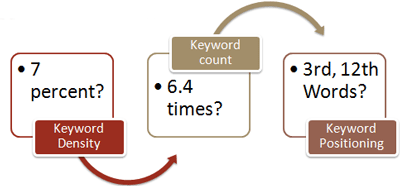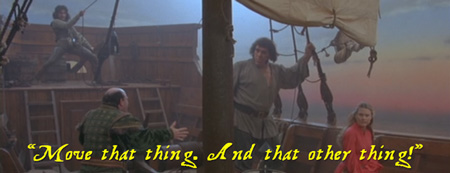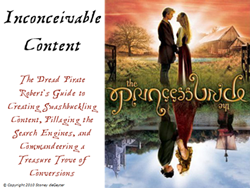Remember the movie Old School with Vince Vaughn and Will Farrell? Yeah, me neither. That’s because, while I’m sure the movie has some funny scenes, it just didn’t have the staying power of, say… Tommy Boy. Of course Tommy Boy had a very distinct advantage out of the gate… it didn’t star Will Farrell. You really can’t come back from that kind of thing.
In the SEO world there is “old school” and then there is “old school SEO nonsense”. In case you haven’t figured it out, in my world, the “old school SEO nonsense” stars Will Farrell. In your world, it might star Colin Farrell, Lindsay Lohan, or the entire cast of Big Bang Theory–all viable alternatives.
Like the actors noted above, “old school SEO nonsense” gets a lot of buzz, but underneath the surface, there just isn’t anything there. People are drawn to it like a mosquito to a bug light because it feels safe. It looks easy. It’s simplicity wrapped in a complexity. But, in the end, it’s hollow, useless, and generally leaves you feeling a little bit ripped off.
Let’s look at a few common “old school SEO nonsense” tactics that keep coming back to bite anybody that’s still stuck in 1998.

Keyword Density
The idea here is that you need to have the perfect keyword-to-text ratio on your pages. A 7% keyword density means you have your keyword 7 times for every 100 words. “Perfect” keyword densities range from 5-10%, and if you just get that magic number, your rankings will soar. Of course, you gotta wonder what happens once 10 other people find the perfect keyword density, too.
If you hear someone talk about getting the right keyword density on your site, shut them down faster than you would a “friend” offering to rent the Will Ferrell disaster (yeah, I know, that was redundant,) Land of the Lost.
Keyword Count
Keyword count is the Step Brother of keyword density (see how I worked in another Will Farrell movie reference there?) The theory goes that there is a minimum number of times you have to have your keywords on the page in order to rank well for it. Doesn’t matter how much text you have, just get your keyword in there 3 times, 5 times, 7 times, or whatever.
Yeah, your keywords should be in the page if you want to rank for them. But in truth, it doesn’t absolutely have to be. If you have enough incoming links pointing to your page with that keyword in the anchor text, that can get you the rankings you want in certain circumstances. But, in a competitive field, that’s usually not enough. There is no magic number of times your keywords should be on the page. Sometimes you use your keyword more frequently, while other times you use related words. It really just depends on the content.
Keyword Positioning
Where you position your keywords in your content does have some merit. (Yes, I’ll admit that I enjoyed both Stranger Than Fiction and Talladega Nights so I’ll give Will Ferrell some credit.) But as so often happens, a single good idea often turns into 20 really, really stupid ideas. (Bewitched, anyone?)
Yes, you want to use your keywords in key places such as your title tag, meta description, headings, and body content. But, does it really matter if your keyword is the third word in the first paragraph or the second sentence of the last paragraph on the page? Do you have to add an additional instance of your keyword in your third heading tag on the page even though it doesn’t really work? The answer is NO. It doesn’t matter, much like most Will Farrell movies.
Old School SEO Without the Nonsense

Old school SEO nonsense is just that. Just a bunch of blubbering directions that have no meaning other than to make the person uttering them feel smarter than you.
Real old school SEO is altogether different. It’s SEO that says, “we’re going back to the basics, back to what works.” There is nothing wrong with SEO that looks at a lot of fancy data. That’s all very important. But, old school SEO was true 10 years ago, and it’s still true today. The methods used to achieve SEO may change a bit here and there, but the same basic principles apply:
Write good content, work in your keywords, and build a quality site worth linking to. Of course, that’s easier said than done. Kinda like expecting a good Will Farrell… naw, too easy!
 This post was inspired from The Princess Bride themed presentation I gave in early 2010 at SEMpdx’s Searchfest titled Inconceivable Content: The Dread Pirate Robert’s Guide to Creating Swashbuckling Content, Pillaging the Search Engines, and Commandeering a Treasure Trove of Conversions. If you enjoyed this post you also might enjoy other posts inspired from the same. Search for “inconceivable content” on this blog to find them all.
This post was inspired from The Princess Bride themed presentation I gave in early 2010 at SEMpdx’s Searchfest titled Inconceivable Content: The Dread Pirate Robert’s Guide to Creating Swashbuckling Content, Pillaging the Search Engines, and Commandeering a Treasure Trove of Conversions. If you enjoyed this post you also might enjoy other posts inspired from the same. Search for “inconceivable content” on this blog to find them all.

4 Responses to It Isn't "Old School SEO" If It's Just Nonsense SEO